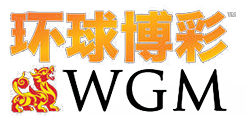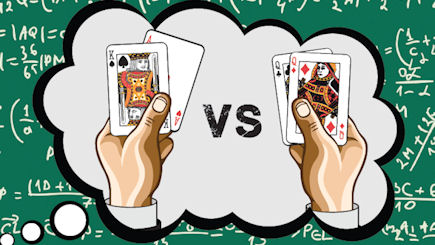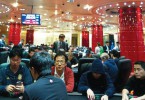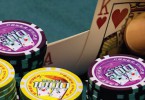Pit any two poker hands together and one will inevitably be favorite to best the other at showdown. But when it comes to pushing this advantage – and how much we should risk to do so – the correct strategy can differ significantly depending on the type of game you are playing. WGM takes a look at the concept of pushing small edges at the poker table and the contrasting considerations when playing cash games compared to tournaments.
Poker, at its heart, is all about exploiting edges. Whether it be seeking out the weakest players in a room to sit with or getting your money in good, the most successful players are the ones that can recognize when they have an edge and take advantage of it.

But that’s easier said than done.
As much as we’d love to hold the nuts whenever an opponent decides to raise, the reality is that poker is a game of small edges and when it comes to the cards in your hand you will rarely be an overwhelming favorite.
We all know, for example, that AA is the best starting hand in No Limit Hold’em. Statistically speaking, AA has around 80 percent equity against any other hand and as much as 88 percent equity against other hands containing an Ace, so getting it all-in pre-flop with such a huge edge is a no-brainer.
But what about QQ? Poker’s third best starting hand remains a strong 80 percent favorite against two random cards but on those occasions it runs into AA or KK it suddenly becomes the overwhelming underdog with just 20 percent equity.
Things start to get tighter when we compare QQ to AK. The “ladies” can expect to come out on top around 57 percent of the time against AK off-suit and 54 percent against the suited variety. And just for the record, QQ is a strong favorite should our opponent decide to get aggressive with AQ but will still get run down 35 percent of the time.
So how do we best apply percentages such as these at the tables?
Let’s start by imagining we can see our opponent’s cards. In a cash game where you can reload and go again whenever you lose your stack, pushing small edges is arguably the single most important skill you can have. This is because the outcome of any single hand isn’t as important as your long-term EV (expected value). So if you were to find yourself in a spot with 51 percent equity, it would be theoretically correct to call off your stack based on long-term expectations.
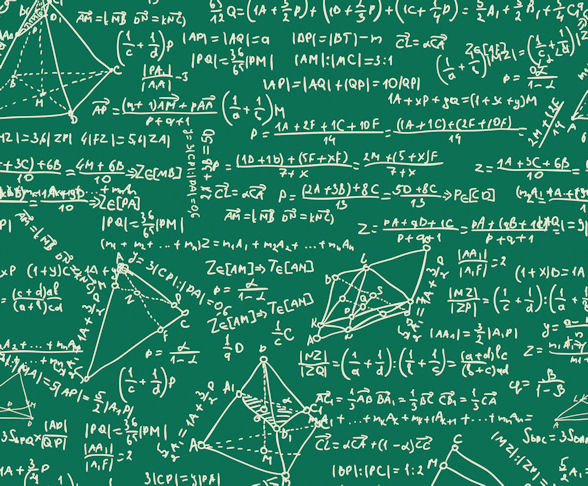
Another way to look at this scenario is in dollar terms. If both you and your opponent go all-in for $100 each in a 51 percent equity situation, you are very close to flipping a coin to determine whether you walk away with $200 or nothing. But if we repeat the situation again and again, our 51 percent edge will eventually start coming into play. In other words, were we to play the same hand 100 times, we can expect to walk away with $10,200 from our $10,000 investment, leaving our opponent with $9,800. That’s a useful thing to remember the next time an opponent hits their two-outer on the river.
Of course, it’s not quite as simple as that in the real world because we can’t actually see our opponent’s hole cards. We’ve got to figure out our opponent’s range on our own. But that’s what separates the good players from the bad and the great players from the good.
The same concepts as above apply but the maths is based on a player’s ability to narrow down the range of hands their opponent is likely holding. A decision can then be made based on how the player’s hand stands up against that range.
This is also where cash games and tournaments differ, because when it comes to playing tournaments you can basically take everything we’ve written above and throw it out the window!
While cash games are about making good long-term decisions, tournaments are geared much more towards short term thinking. It is still important to take advantage of small edges in smaller pots, but just as important is survival when all the chips go in the middle given that in a typical freezeout event there are no second chances. That means avoiding unnecessary risks.
Imagine a scenario in which you sit down in a tournament and are dealt QQ on the very first hand. An opponent opens the pot, you 3-bet and your opponent shoves but in doing so accidentally flips over his cards to reveal AK suited.

You now know, therefore, that you are a slight 54 percent favorite to win the hand which would make it an easy call in a cash game – but in this case there are significant short term consequences to consider. If you lose the hand, your tournament will be over as quickly as it began – and this will happen almost half the time!
The other factor to consider here is how winning the hand might reasonably impact your chances of going deep. If doubling your stack literally doubled your expected ROI (Return on Investment) for the tournament, it may well be a risk worth taking – but that’s never going to be the case during the early stages of any large tournament.
To illustrate this point, let’s take a look at the 2014 WSOP Main Event which attracted a hefty 6,683 players. Starting stacks were 30,000 so doubling in the first few hands would move you to 60,000. But by the time the money bubble burst on Day 4 with 693 players remaining, the average chip stack was 289,300 with the chip leader on 1.5 million! It took 12.1 million for Bruno Politaro to reach the final table as the short stack.
Compared to those figures, 60,000 seems scant reward for putting your tournament life on the line.
This brings us to the key consideration of tournament play – risk vs reward. Every time you go all-in during a tournament, you are risking elimination. The goal, certainly during the early stages, should therefore be to avoid going all-in unless you have the nuts or something close enough to it.
Inevitably however, situations will arise where the reward for risking your tournament life is simply too good to refuse.
Officially referred to as the Independent Chip Model (ICM), this is essentially a mathematical calculation of your equity in any given tournament based on the stack sizes of the remaining players and the prize pool distribution. By utilizing all of this available information, we are able to establish a range of hands with which it is correct to shove and a range with which it is correct to call an all-in. Why? Because our equity in the tournament can be expected to rise within these ranges – or to put it simply, the reward significantly outweighs the risk.
We will delve further into ICM in a future issue including an explanation as to how the value of a tournament chip actually changes in terms of real dollars as a tournament progresses.
It’s a complicated albeit important concept when it comes to understanding the ins and outs of tournament poker. In the meantime, start by focussing on low risk vs high reward and watch your tournament game flourish.
